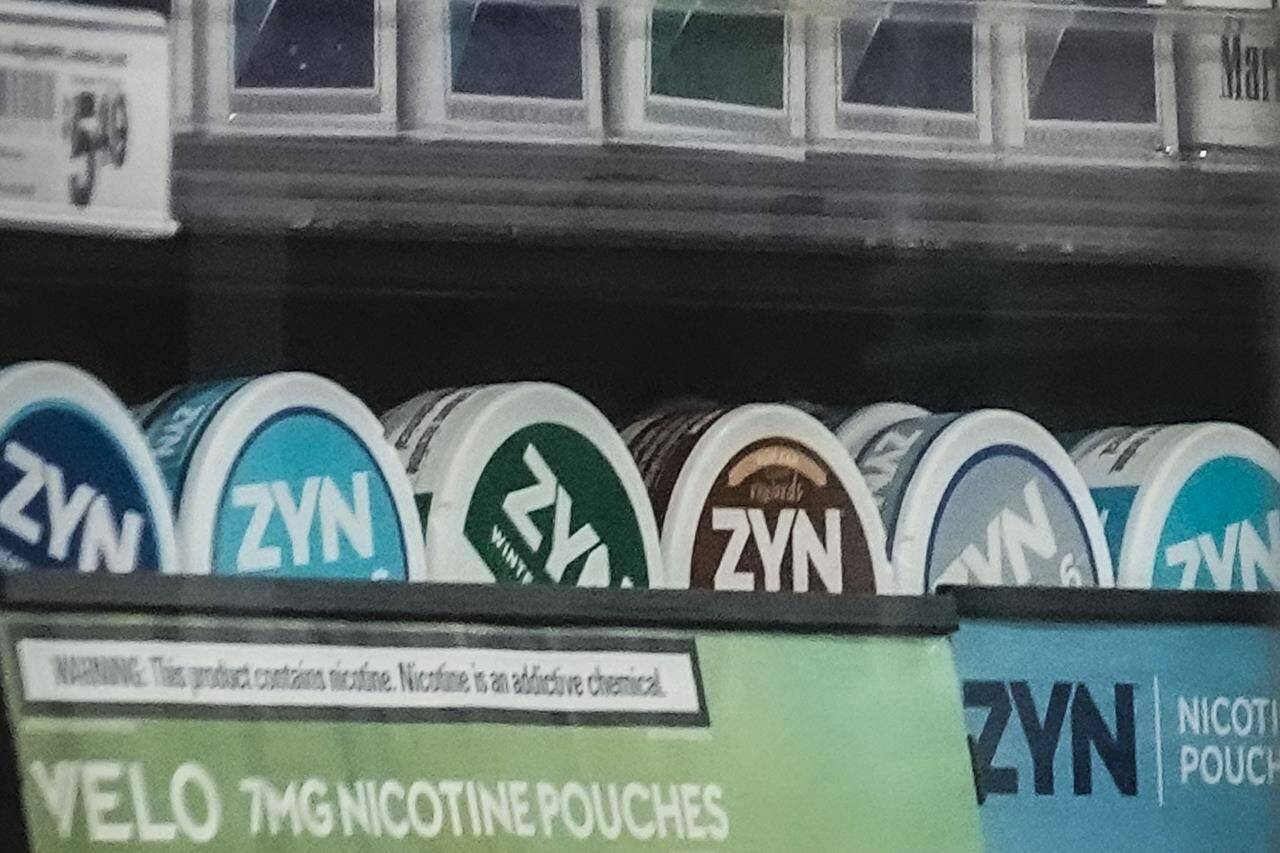A tiny Philip Morris product called Zyn has been making big headlines, sparking debate about whether new nicotine-based alternatives intended for adults may be catching on with underage teens and adolescents.
Here’s what to know about Zyn:
WHAT IS ZYN?
Zyn is an oral pouch that contains nicotine powder and flavorings like mint, coffee and citrus. The pouches are the fastest-growing segment of the tobacco industry, which has struggled for decades to replace falling cigarette sales.
Zyn is marketed by Philip Morris International to adult tobacco users. Although it doesn’t contain tobacco, U.S. regulators still treat it as a tobacco product.
Competitors sell similar products. Altria, for instance, sells its own flavored pouches called On.
HOW DO NICOTINE POUCHES WORK?
Users stick them between their lip and gums, where they slowly release low levels of nicotine that are absorbed into the bloodstream. Because pouches generally don’t contain tobacco, there’s no spitting, unlike older products like chew and snuff.
Philip Morris representatives say the nicotine-only formulation is part of Zyn’s appeal.
“People can be reluctant to move into an oral tobacco product if they view it as similar to traditional chewing tobacco,” company spokesman Corey Henry said. “Consumer acceptability is a big part of Zyn.”
IS ZYN HEALTHIER THAN OTHER TOBACCO PRODUCTS?
All tobacco products carry serious health risks. Cigarettes are widely understood as the most harmful, increasing the likelihood of cancer, heart disease and lung problems. Chewing tobacco is linked to mouth cancer, gum disease and tooth loss.
But in the last decade or so, researchers and health regulators have begun to acknowledge different levels of harm among different tobacco products.
In 2019, the Food and Drug Administration said a different oral tobacco product, called snus, contains lower cancer-causing chemicals than cigarettes and could benefit smokers who switch.
Snus are similar to nicotine pouches like Zyn, except that they contain fermented tobacco. Studies from Sweden and other places where they are popular have shown lower rates of lung cancer and related diseases compared with other European countries where smoking is more prevalent.
There’s little research on the long-term effects of nicotine pouches, but many researchers expect they will show similarly low rates of carcinogens and other toxic components.
Still, that doesn’t mean they’re safe. A study last year found Zyn and similar products contain low levels of harmful substances such as ammonia and formaldehyde.
WILL THE FDA AUTHORIZE ZYN FOR ADULT SMOKERS?
Currently FDA officials are letting Zyn stay on the market while they review Philip Morris’ marketing application, which was submitted in 2020.
To win FDA authorization, companies generally must show that their products will reduce disease among adult tobacco users without attracting underage use by teens and adolescents.
IS ZYN POPULAR AMONG YOUNG PEOPLE?
Not according to the latest federal data. Only 1.5% of high school and middle schoolers reported using nicotine pouches when surveyed last year. That’s well below the roughly 10% who used electronic cigarettes.
But anti-tobacco advocates point to worrying signs: videos of young people popping the pouches have racked up millions of views on social media in recent months. A similar surge of online activity preceded the rise of Juul, the sleek e-cigarette widely blamed for triggering a spike in teen vaping in the years before COVID-19.
Concerns about Zyn going viral have sparked debate among health experts, parents and even politicians.
The FDA says it’s monitoring underage use of Zyn and other pouches and will take action, if necessary.
CAN ADULT SMOKERS USE ZYN TO HELP QUIT?
Currently only a handful of products are FDA-approved to help with quitting smoking, including medications, nicotine gums and patches. Some researchers point out that Zyn works similarly to some of those products — gradually delivering nicotine that reduces cravings.
But early research suggests Zyn and other pouches may not be enough to help smokers quit.
Ohio State University researchers recently found it took smokers 30 minutes to an hour to get enough nicotine from Zyn to relieve their cravings. With cigarettes, smokers achieved the same nicotine levels — and relief — in five minutes.
For now, Philip Morris is focused on obtaining FDA authorization to stay on the market, and eventually it has said it could seek a reduced-risk designation similar to snus. But no tobacco company — Philip Morris included — has ever asked the FDA to approve their products to help smokers quit completely.
___
The Associated Press Health and Science Department receives support from the Howard Hughes Medical Institute’s Science and Educational Media Group. The AP is solely responsible for all content.
Matthew Perrone, The Associated Press

